In 1923 André Malraux (1901–76) was a young dandy with few achievements to his name, but he was already circulating in Parisian high society on the strength of his personality. To his new wife Clara Goldschmidt, he suggested an adventure in the Far East, which would allow them ‘to live to our standards, at least for a few years’. And so the young couple set off for what was then Indochina, travelling along the Mekong Delta to Cambodia, and the 10th-century Hindu temple Banteay Srei in Angkor, where Malraux and his old school friend Louis Chevasson walked in as curious tourists and walked out with Khmer-era sculptures under their arms. They pried them loose from the temples using chisels and picks with a plan to sell the stolen goods on the art markets in London or New York. But it was foiled before they could return to Europe. The French colonial police promptly arrested the pair and put them on trial in Phnom Penh. Malraux received a three-year prison sentence and Chevasson 18 months.
No sooner was Malraux sentenced, than his support network in Paris mobilised. Although he was guilty, his arrest and imprisonment were deemed inappropriate – because the crime was of no consequence. Clara spearheaded a campaign for his acquittal and a number of notable arts and literary figures signed a petition defending Malraux on the grounds of his potential as a writer: ‘the undersigned […] have confidence in the consideration that justice is wont to show all those who help increase the intellectual wealth of our country.’ The undersigned included the Catholic critic and novelist François Mauriac and the two Andrés, Breton and Gide. The injustice, as they saw it, was on the side of the colonial police. Breton could not understand the fuss: ‘Who in their homeland really cares about the preservation of these works of art?’ The campaign worked. Malraux had his sentence reduced to a year, and then suspended – his thieving activities faded into the background and he emerged instead as a protector of world heritage under threat from neglectful native populations.
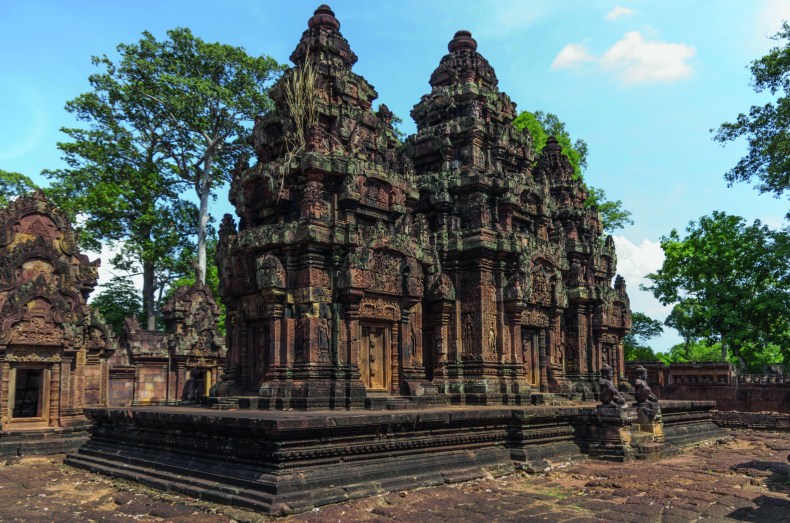
Carved towers in the Banteay Srei temple complex in Angkor, which Malraux visited in 1923. Photo: Paul Lee/Alamy Stock Photo
Malraux would become France’s first culture minister in de Gaulle’s Fifth Republic, creating a legacy that lasts to this day. But he occupied so many roles during his life – from celebrated novelist and anti-fascist resister to art historian and collector – that it is astonishingly difficult to provide a satisfactory answer to the question ‘Who was André Malraux?’ – despite the multiple biographies, extensive documentation, and testimonies now available. To try to answer it is, perhaps, beside the point. Malraux was a man ‘organically incapable of moral independence’ – in the words of former friend turned bitter critic Leon Trotsky. For others, he was a thief, a traitor, a compulsive liar capable of great acts of infidelity and cruelty, and a turncoat – with his switch from anti-fascist crusader to right-hand-man of President de Gaulle. In 1966, a young Jean-Luc Godard wrote an open letter published in Le Nouvel Observateur, describing his hatred and how he was ‘loath to shake your hand’ after Malraux had authorised a ban of Jacques Rivette’s film La Religieuse. Yet there have always been as many admirers as critics.
One can understand some of his appeal by looking at and listening to him. Photographs reveal thin features, watchful eyes, pristine, double-breasted suits. Recordings of his voice convey an almost imperceptible tremor as he tried to conceal a more violent irregularity – some say he suffered from undiagnosed Tourette’s syndrome.
He is also of course still celebrated for his fiction. Whatever the incriminating details unearthed by his biographers, especially Olivier Todd, who has written the most recent – and withering – account, defenders point to his best and most famous works: La Condition humaine (1933) and L’Espoir (1937), two of a trilogy of war novels set in China and Spain. The first brought him the prestigious Prix Goncourt and the second is praised even by Todd, who considers it the enduring work in an otherwise dubious, dated bibliography.
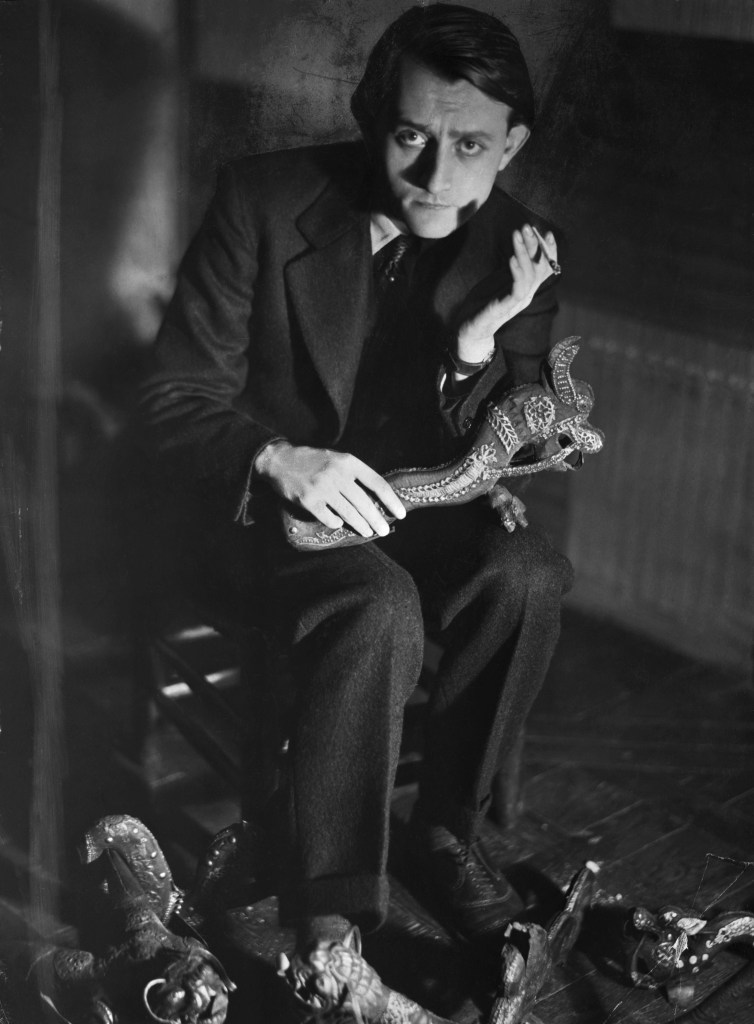
Andre Malraux holding a Khmer sculpture. Photo: © Bettmann/Getty Images
Amid the many portraits of Malraux, each of which emphasises a different aspect of the man, it is hard not to be struck by one constant: his mythomania. He went about it with such energy that it seems almost poignant. The facts of his life were colourful enough without him needing to invent others, such as friendships with Stalin and Mao (he never met the first and met the second only briefly), or his involvement in the Spanish Civil War (he led a small pro-Republican air force), and French Resistance (a last flurry in the final year of the war, after he had spent most of it living comfortably in the south of France). And perhaps there is another constant, if we follow a single thread in the Malrucian tapestry – that of the art collector and historian – which may offer a clue to the enigma after all. The Cambodian episode was motivated by profit, but Malraux also played a vital role as a collector afterwards, particularly during the 1930s, bringing art from the East, including Buddha and bodhisattva heads from Afghanistan, to the West. And as de Gaulle’s culture minister, a post he occupied in 1958–1969 (after a spell as minister of information in 1945–46), Malraux’s impact on French museum culture was profound.
We have him to thank, in particular, for the now shuttered museum at the Porte Dorée on the Paris périphérique, originally known as the Musée Permanent des Colonies after it was born from the 1931 Colonial Fair. In 1960 Malraux declared that its name should change to the Musée des Arts Africains et Océaniens – its previous title was becoming a source of embarrassment in a country in the uneasy process of decolonisation in Indochina and North Africa.
The MAAO was one of three anthropological museums in Paris, all with slightly different roles: the Musée de l’Homme, which was inaugurated in 1938, across the city at the Palais Chaillot (on the site of the Trocadero), had a scientific and educational role – it was even run briefly by Claude Lévi-Strauss. The Musée Guimet was the oldest of the three, having opened originally in Lyon in 1879 before relocating a decade later to its present spot on place de l’Iéna (a few steps from the Trocadero). The Guimet’s focus was and continues to be on Asian art and Malraux saw the MAAO as the equivalent for African and Pacific art. Most importantly, neither the Guimet nor the MAAO were in the service of pedagogy or science. They were displaying ‘primitive’ works to elevate them to the status of high art.

Head of a bodhisattva 3rd–4th century, Hadda, Afghanistan. Musée Guimet, Paris (formerly in the collection of André Malraux). Photo: © Musée Guimet, Paris, Dist. RMN–Grand Palais/Thierry Ollivier
The collection of the MAAO and a part of the old Musée de l’Homme’s were amalgamated into today’s Musée du Quai Branly, which opened in 2003, and presented itself simply as the home for non-Western art, seeking to erase hierarchies between artistic traditions from around the world. It is a mission statement that clashes with Malraux’s original vision for the MAAO. While he imposed an aesthetic value system on ‘primitive art’, elevating artefacts to the status of art, the Quai Branly aims to remove that value system, and with it any means of judging art from artefact. (In 2015, the Musée de l’Homme reopened after years of renovation with an entirely new layout and rebrand, based around a set of questions – who are we? where do we come from? where are we headed? – designed to engage visitors.)
Malraux’s influence on French museum culture stretches beyond the creation and maintenance of institutions and into the realm of theory and art history. It is perhaps his most original and important contribution, rising above the novels and ministerial policies. His books on the subject – La Psychologie de l’art (1947–49), the three volumes of Le Musée imaginaire de la sculpture mondiale (1952–54), Les Voix du silence (1953) and La Metamorphose des dieux (1957–76) – have also influenced disciplines such as cinema and photography, anthropology and psychology.
For a man seeking acceptance in Parisian artistic and aristocratic circles, Malraux had an unorthodox upbringing and education. His parents divorced when he was a child and he grew up living above his grandmother’s sweet shop in the small suburban town of Bondy northeast of Paris. From an early age he seems to have been ashamed of his modest origins and determined to escape them, progressively erasing the facts through embellishments and lies. His ambition also translated into a thirst for high culture – a ticket out of Bondy as he saw it, something that would set him apart. The more typical route would have been to adhere to the rigid French schools system, from elite college to Grande école. But Malraux left school before taking the baccalauréat and that he rose as far as he did was not a source of pride but another truth he sought to cover up and distort. He later claimed he had a degree in Oriental studies, which he did not.
It is impossible to say how Malraux’s unconventional education contributed to his thinking, but it may have allowed him to see beyond the set categories of art history, to leap over the boundaries of disciplines, historical periods, and the classification of artworks and movements to create his ‘museum without walls’. He originally conceived of the concept in terms of art books that would juxtapose works from world cultures – taking in Europe, but also Africa, the Far East, India, and the Americas. Comparison between art forms, typically separated by the walls of traditional museums, was essential to his outlook, and he believed art books were the best vehicle for enabling this.
Despite his public split with Godard in the 1960s, Malraux continued to be a formative influence on the film maker’s thinking about art and cinema. In the 1980s, Godard even conceived of a film adapting the Malrucian oeuvre, entitled The Metamorphosis of the Gods. Although that project never materialised, his seminal Histoire(s) du Cinéma could be considered, as the critic Michael Witt has argued, ‘its partial realisation’. In his study of the director, Cinema Historian (2013), Witt draws out the three key ideas from Malraux that have been most formative for Godard: the notion of art as an outcome of man’s constant struggle against the human condition; the idea of creativity as the transfiguration of the real, not its representation; and, finally, Malraux’s exploration of art’s metamorphoses from epoch to epoch, or culture to culture.
In a famous series of photos for Paris Match taken by Maurice Jarnoux in 1953, we see Malraux standing in his living room, viewed from above, as he ponders and rearranges scores of photographs of artworks from various cultures and epochs set out on his floor, preparing the second volume of Le Musée imaginaire. The shots evoke a writer or director creating a storyboard and playing around with the narrative structure and chronology of scenes, experimenting with different combinations to see what they generate.
These photographs, the subject of a recent book by Walter Grasskamp, capture the spirit and freedom of Malraux’s thought, and also represent a very Malrucian notion of what an artist is: a solitary hero engaged in a battle against death. ‘Art,’ he said in Les Voix du silence, ‘is a revolt against fate’. The artist was the world’s rival, in Malraux’s eyes, not its transcriber. ‘On this earth of ours where everything is subject to the passing of time,’ he wrote in L’Intemporel (published in the year of his death), ‘one thing only is both subject to time and yet victorious over it: the work of art’.
Jarnoux’s photographs show us art in the process of being decontextualised, a key element in Malraux’s thinking and also the linchpin of his defence of the idea of the museum. The process, to be in any way effective, needed an art historian at the centre, and Malraux was delighted to comply. It is tempting to return to Godard here, and his notion of the director’s role in montage – able to put two images together in order to produce a third image in the viewer’s mind. What Malraux sought was something slightly different: by taking an artwork out of its original context through a photographic reproduction, and manipulating it through the use of scale, lighting and angles, he could liberate it. His books allowed readers to discover the universal styles and forms of art, and ultimately the essence of creativity.
The series of photographs and the ‘museum without walls’ that resulted raises questions about art collection and display, as well as offering its most eloquent defence. The decontextualising of art, and in particular sculpture, showed what Malraux described in Les Voix du silence as ‘a family likeness of objects that have actually but slight affinity […] each in short has practically lost what was specific to it’. The loss of the specific and revelation of the universal is inspiring, but it comes at a price.
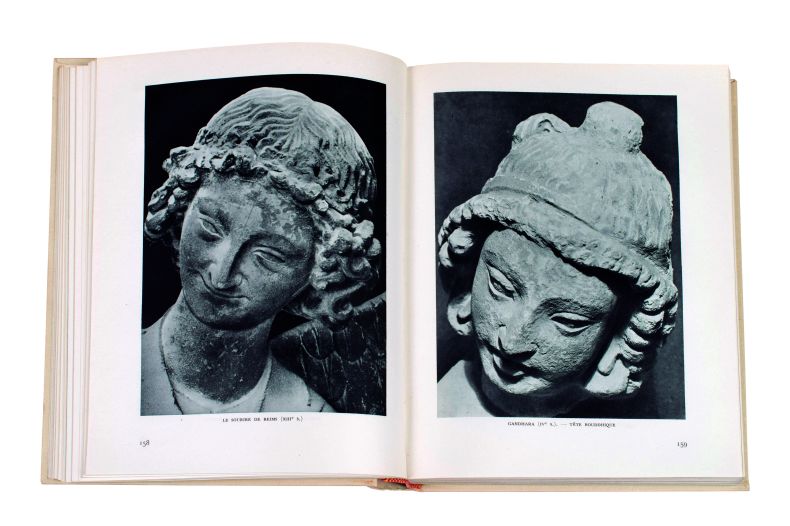
A spread from Les voix du siècle (1953) showing the 13th-century Le Sourire de Reims (verso) and a 4th-century Gandharan head from Afghanistan (recto). Photo: Stephan Vavra
Nor can the attitude of French intellectuals to the Cambodian episode be dismissed as merely revealing colonial attitudes in 1920s France. Decades later in 1996, when Malraux’s ashes were transferred to the Pantheon, the greatest honour the French state can afford a citizen, Jacques Chirac swiftly passed over the episode in his speech at the ceremony, describing Malraux’s actions as ‘removing’ a few statues.
Malraux was a figure who repeatedly manipulated the real, and layers of history, to reveal what had supposedly always been there, giving the old a new existence. In a fitting though perhaps apocryphal story, he would claim to be the only man who could make de Gaulle whistle in admiration. The episode supposedly took place when Gaulle’s visited the Cour carrée of the Louvre to see the first completed clean-up of a monument in Paris – a project initiated by Malraux. Entering through the still-blackened façade, the General discovered the glistening sandy stone of the interior courtyard, and whistled in wonder at what he saw: a centuries-old building was now pristine.
From the July/August issue of Apollo. Preview and subscribe here.
Unlimited access from just $16 every 3 months
Subscribe to get unlimited and exclusive access to the top art stories, interviews and exhibition reviews.

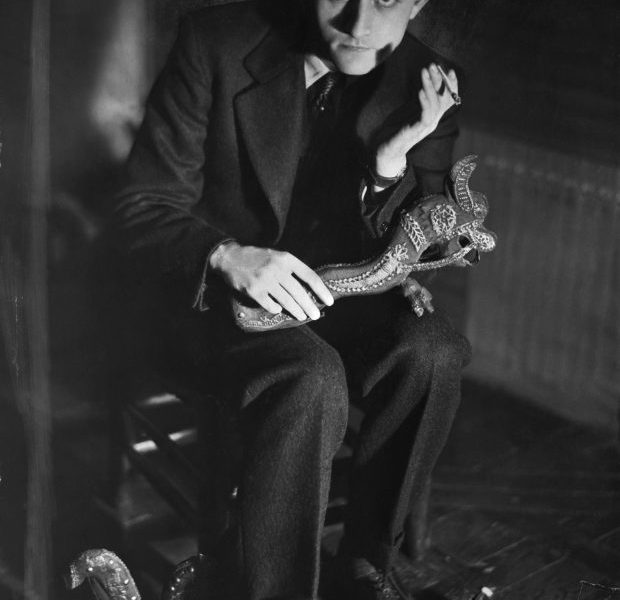
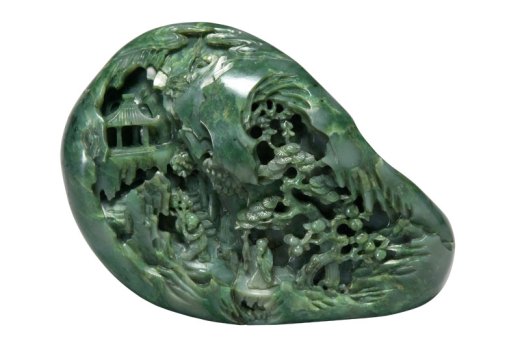
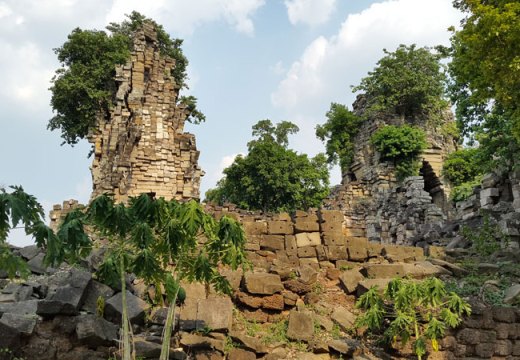









![Masterpiece [Re]discovery 2022. Photo: Ben Fisher Photography, courtesy of Masterpiece London](http://www.apollo-magazine.com/wp-content/uploads/2022/07/MPL2022_4263.jpg)
Why are fathers so absent from art history?